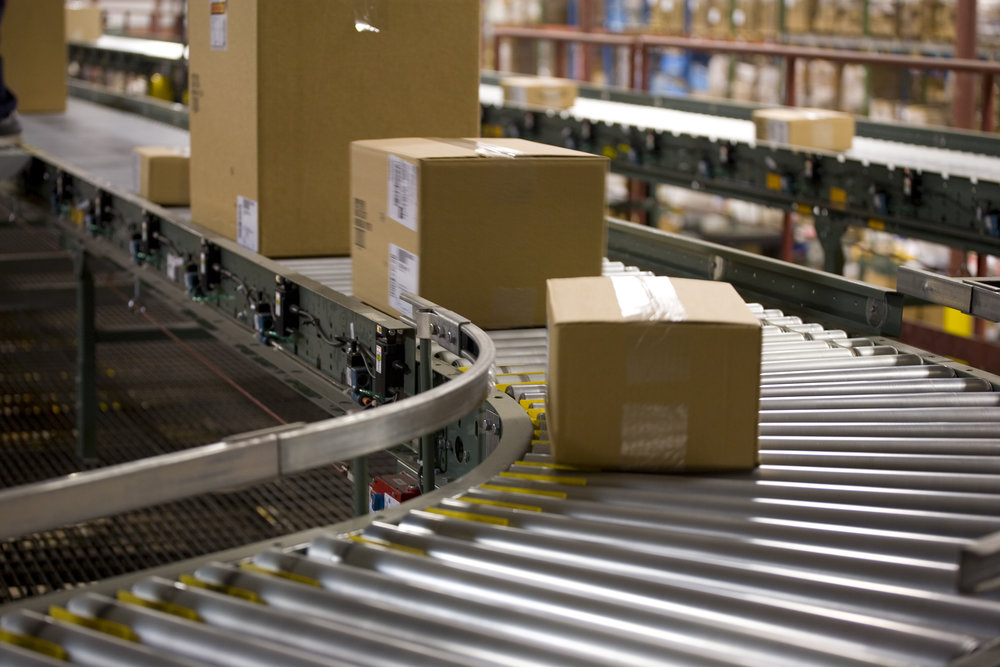Wasp Barcode Technologies: The Barcode Solution People
Barcode Labeling During the Busiest Shipping Season

With the ‘most wonderful time of the year wrapping up, so is the end of the busiest shipping time all over the globe. Like most years, shippers had predicted a record number of deliveries for this holiday season. In 2015, Cyber Monday alone garnered some
$1,505,000,000 in online sales – all of which had to be shipped to doorsteps of homes and businesses. Keeping track of said packages does not have to spoil the holiday season for anyone. In fact, tracking packages should be simple with
barcode labels. Keep in mind however, tracking packages is not the only use of barcode labeling. Rather, there are many uses that can help your business, large or small, run more efficiently and effectively, not only during the holiday rush, but all year-round.
[Tweet "In fact, tracking packages should be simple with barcode labels."]
Tracking Packages
Almost from the moment the consumer hits the “submit” button on a business’ e-commerce site, a tracking number is assigned to the package. The tracking number is attached to a barcode that allows not only the customer, but also the seller to track the package.
Scanning the barcode affixed to the package makes it easy to see where the package is as it travels from the seller to the consumer. From origination to the in-transit activity along the route to the delivery destination, scanning of barcodes makes it possible to know the location of the package at all times.
Have you ever received an email from FedEx or UPS alerting you that your package is out for delivery, or perhaps that the arrival time has been changed? This information would not be available if not for the barcode.

During the holiday rush and the following return rush, a speedy delivery is not only preferred, but in most cases, required. In fact, many businesses lose a sale during the Christmas season if the product cannot be delivered by said date. After Christmas, the returns start almost immediately. Therefore, consumers everywhere rely on the computer system to inform them as to whether or not an item has been delivered, returned or where it is in transit each way. How does the computer system automatically know where an item is? Simple. A barcode.
Tracking Sales, Inventory
In order to know what you have in stock, there has to be some form of tracking mechanism or system. According to the
U.S. Small Business Administration, poor inventory management is one of the top reasons small businesses do not succeed. To put into perspective, the
2016 State of Small Business Report, reveals that some 48 percent of small businesses do not track their inventory. This is quite interesting when you take into account that
32 percent of small businesses use their websites to sell goods.
[su_divider top="no" size="2"]
[su_divider top="no" size="2"]
Inventory management systems allow you to
track products by using barcodes, realizing best-sellers that will need to be reordered, which is especially helpful during the holiday season. In fact, such systems allow you to look at each item to determine what was sold the year prior and the quantity. This is great information to have year- to-year as businesses are able to
manage inventory, and make projections based on past sales and lead times.
Not that many people ship groceries as gifts during the holiday season, but they sure purchase them. Holiday meals are just as important as the gifts under the tree. What’s a celebration without the traditional holiday dinner? Most every consumer has witnessed the benefit of barcoding when it comes to the grocery store. As each item is scanned across the check-out stand and moved across the conveyer belt, it tells a story. Retailers rely on information gathered from barcodes the previous year to determine how many of each item they need for the current year. It shows what was purchased when and how much. Running out of turkeys the week before Thanksgiving or hams a week before Christmas is completely unacceptable. Barcodes and the information retrieved from using them can keep this from happening.

Tracking Assets
Quite different from tracking inventory, tracking assets gives you an account of the permanent fixtures owned by your business. Whether it is the number and location of laptops your organization houses, or hospital beds, cash registers or office furniture,
barcode asset management systems are imperative, especially if your business extends outside four walls.
As supply chains become more global, keeping track of even a small business’ assets is a pain. Assigning a barcode to each asset can be helpful in knowing where the item is located, as well as other important information such as the make, model and year produced. This also enables business owners to know when items become obsolete or in need of replacement or service. While most small businesses concentrate on revenue growth, only
20 percent of those businesses are willing to invest time or money into the training or necessary tools to make growth possible. Tracking assets is imperative to growth, or the revenue from growth will be canceled out by replacement costs of fixed assets.
Time Saver
Simply put, barcodes save time. Before barcodes, employees spent countless hours counting inventory by hand and entering data into manual spreadsheets. See anything wrong with that? Human error. Human data entry can have an
error rate of one per every 300 characters, whereas barcodes are nearly error-free with only one error per 36 trillion characters. This is not to mention the number of errors encountered with actually counting inventory or assets, or for that matter, calculating sales.
Wrapping It Up
Aside from
accuracy, speed and inventory control, barcode tracking is affordable for most any organization. What was once considered pricey, now, not only saves enough money to pay for itself fairly quickly, but also has a price tag that makes the benefits worth the investment for most any small business.
So, by the time those packages are wrapped, donned with a bow and under the tree, barcode systems have saved small businesses money, and not so nice but naughty headaches during the holiday season.





